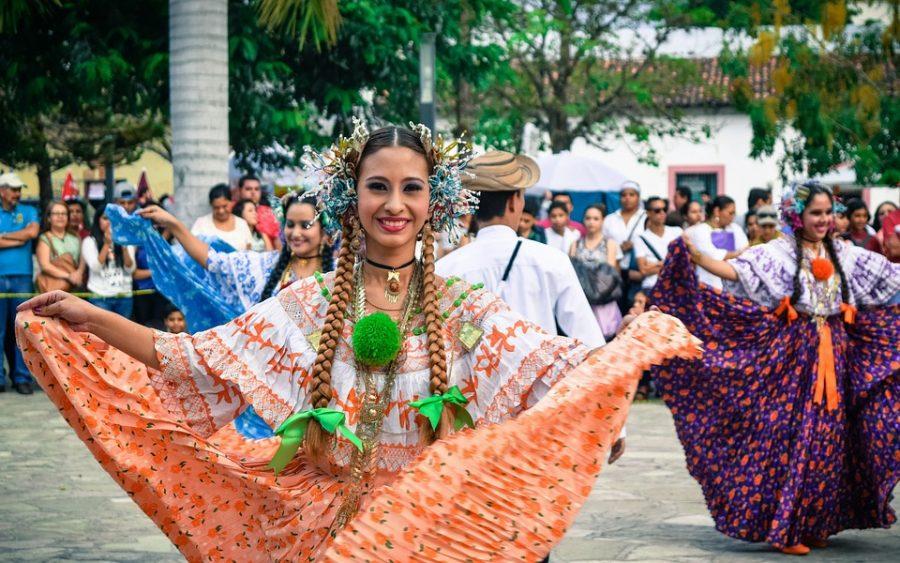Since my childhood I’ve adored the traditional cuisine of my native country, Nicaragua. In my lifetime, my mother has cooked a plethora of meals that have left me breathless and wondering: “Will I ever cook as well as my mother?” It’s safe to say that because of my mom, I’m filled with a strong national pride for my country’s cuisine. Because of this reason, I never thought I’d be writing a post about our sworn rivals; on this edition of Tasty Travels we will be discussing the cuisine of Nicaragua’s snobby next-door neighbor, Costa Rica!
(On a more personal note, I’ve always looked down on Costa Rica. Sure it might be more economically better off and more likely to be spotted on a map by the average geography-challenged American, but it’s just weird…the whole country is like a hipster/hippie version of Nicaragua with a strange superiority complex and a knack for saying “Pura Vida” (Pure Life) whenever it gets the chance. Costa Rica is your weird, cannabis-smoking cousin that gets all the good grades and attention but unfairly overshines your zest and originality….I’m 75 percent biased, 25 percent jealous but 100 percent correct!)
For this edition, I interviewed junior Laura Scoville, a vegetarian who, at the time of her trip to Costa Rica, wasn’t a vegetarian at all.
What country did you visit?
“I visited Costa Rica the summer going into my seventh grade year.”
What type of food did you eat on this trip?
“I ate a lot of meat. A particular dish that I thoroughly enjoyed was Casado. It means ‘marriage,’and it was the pairing of rice, beans, some vegetables and a certain protein. I don’t quite recall what the meat was, but it was very well-marinated and flavorful. Another thing I had a lot of were batidos; it’s pretty much just a fruit smoothie but better since the fruit was insanely fresh.”
So, you weren’t a vegetarian at the time?
“No, I wasn’t… actually I think the meat I ate in Costa Rica was some of the last meat I ever ate, so I recall it tasting much better than it probably did. With that trip in mind, being vegetarian is really difficult when you travel abroad, so when I travel outside of the U.S. I’ll spend a couple months beforehand easing myself into eating meat again.
What was your favorite dish you encountered?
“Definitely gallo pinto. It’s just rice and beans that’s really well prepared and seasoned.”
__
Rivalries aside, the interview with Scoville made one thing clear: Costa Rican food and Nicaraguan food have striking similarities; the structure defined in Casado — rice and beans with a side of protein — is essentially the structure of all home-style Central American food. In my household, when meat is cooked and there isn’t a side of rice to accompany it, my parents and I feel as if we are putting on shoes without a fresh pair of socks. After putting deeper thought into Casado, I found myself increasingly confused with the fascination surrounding the it. Casado is a combination of ingredients that was so strikingly familiar to me, something that I wouldn’t even think of considering as a dish — it simply just was a critical part of my diet.
Considering the true meaning behind Casado’s name, married man, I decided to do further research on the history of the name. According to an article on travelexcellence.com, the popularity of Casado emerged in the 1960s, when the men of the Costa Rican workforce craved food that resembled what they typically ate at home. The combination of ingredients that create Casado were common in the lunches that many Costa Rican wives cooked for their husbands during their lunch hour. Casado is called “married man”, as the dish is perceived to be responsible for feeding the male Costa Rican workforce. Putting aside the peculiar name and my desire to name one of my original dishes “Hambrient,” or “hungry girl,” I finally got a broader understanding of the entree. Casado maximizes its taste and affordability, arising from history as the very definition and embodiment of Latin American culture.
In conclusion, the interview with Scoville was a special one because I could truly relate with the cuisine she discussed. Despite the fact that my strong Nicaraguan pride remains untouched, this edition of Tasty Travels is a reminder to keep an open mind.
SIDENOTE: Nicaraguan gallo pinto (yes, we have it too!) is superior.
LATEST NEWS
- Bruins Baseball ranks second in the state, April 20
- Stress, anxiety skyrocket as students prepare for upcoming AP tests
- RBHS holds successful night of percussion
- Not even water?
- Solar eclipse to pass through Missouri, April 8
- How CPS is organized: a guide
- City of Columbia to hold school board election April 2
- Youth Election Participants to assist in upcoming municipal election
- City of Columbia hosts first Community Engagement Session for McKinney Building, hopes to gain public insight on the structure’s future
- RBHS Track Team Opener at Battle Gallery


























































































